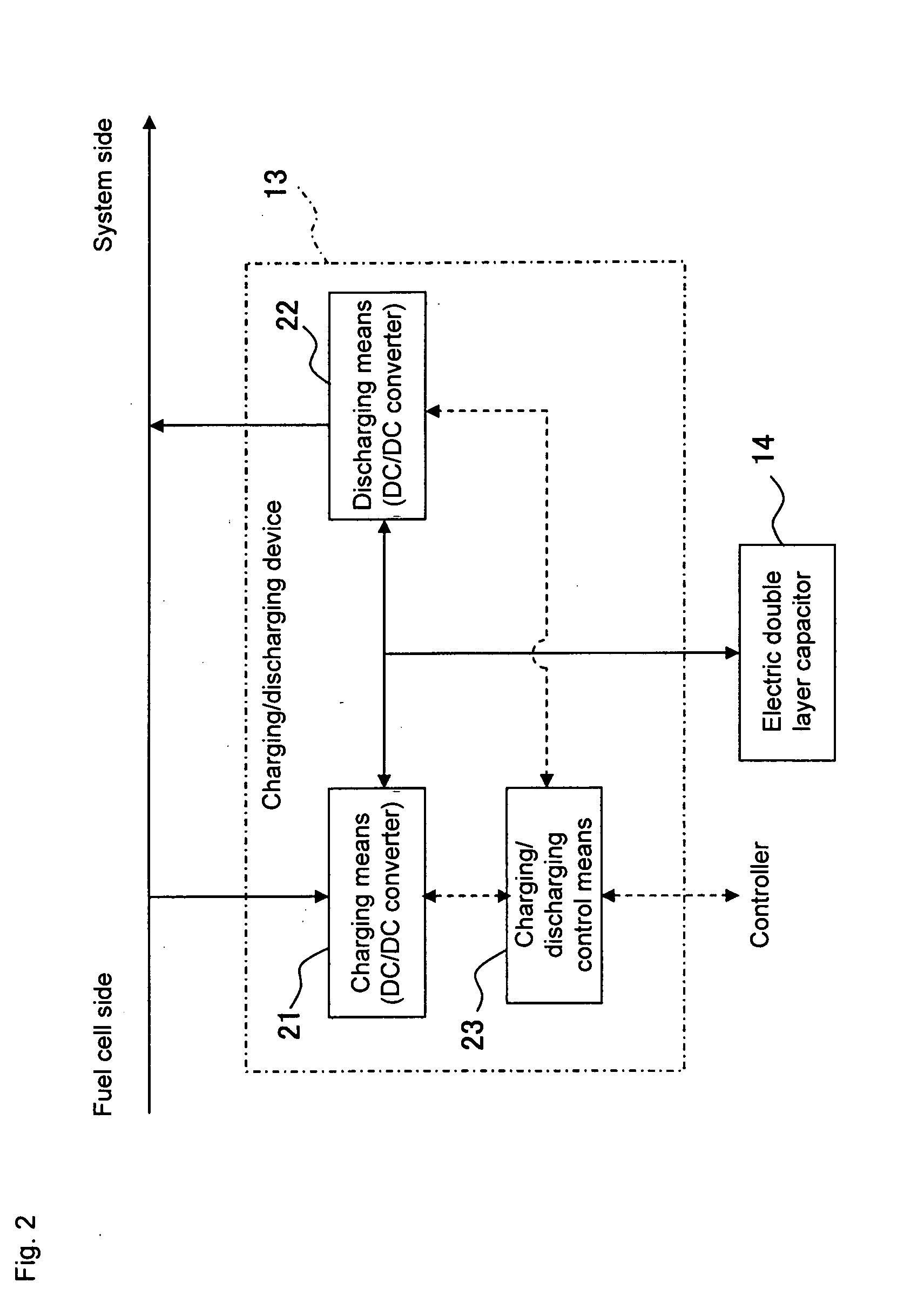Fuel cell system
a fuel cell and household technology, applied in the direction of fuel cells, dc network circuit arrangements, electrochemical generators, etc., can solve the problems of low fuel cell power utilization rate, excessive power generation, and fuel cell power not being able to follow a drastic variation in load, so as to improve the capacity operating rate of the fuel cell, improve the rate of generated-power utilization rate, and improve the reliability
- Summary
- Abstract
- Description
- Claims
- Application Information
AI Technical Summary
Benefits of technology
Problems solved by technology
Method used
Image
Examples
Embodiment Construction
[0032]Referring to drawings, the following description will discuss a fuel cell system in accordance with an Embodiment of the present invention. Here, although the power conversion between a charging / discharging device and a power conditioner (including built-in DC / DC converter and inverter) actually causes a loss, the loss is ignored for simplicity of explanation, and the explanation is given supposing that the input and output powers of the charging / discharging device are equal to each other (PIO=PC) and that the input and output powers of the power conditioner are also equal to each other (PO=PS).
[0033]FIG. 1 shows a schematic structure of a fuel cell system 10 including a fuel cell device 11, a power conditioner 12, a charging / discharging device 13, an electric double layer capacitor 14, a controller 15, a load 16 and a commercial power supply 17 (system).
[0034]The fuel cell device 11, which supplies a DC output (cell power) from the fuel cell, is provided with, for example, a ...
PUM
| Property | Measurement | Unit |
|---|---|---|
| power | aaaaa | aaaaa |
| power consumption | aaaaa | aaaaa |
| voltage | aaaaa | aaaaa |
Abstract
Description
Claims
Application Information
 Login to View More
Login to View More - R&D
- Intellectual Property
- Life Sciences
- Materials
- Tech Scout
- Unparalleled Data Quality
- Higher Quality Content
- 60% Fewer Hallucinations
Browse by: Latest US Patents, China's latest patents, Technical Efficacy Thesaurus, Application Domain, Technology Topic, Popular Technical Reports.
© 2025 PatSnap. All rights reserved.Legal|Privacy policy|Modern Slavery Act Transparency Statement|Sitemap|About US| Contact US: help@patsnap.com



